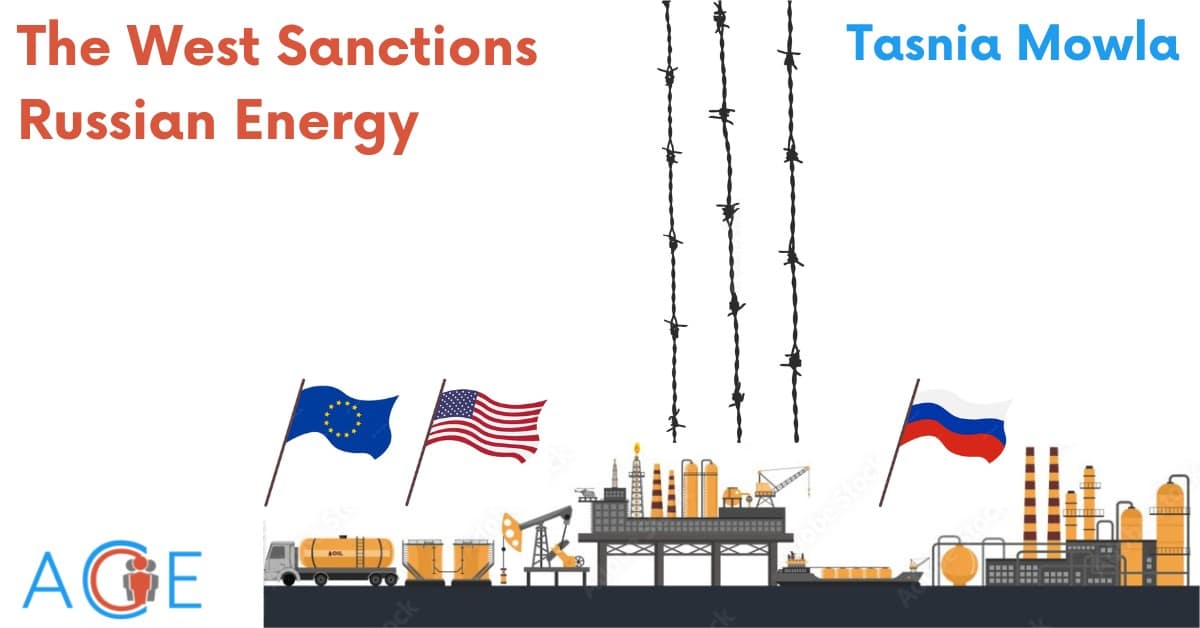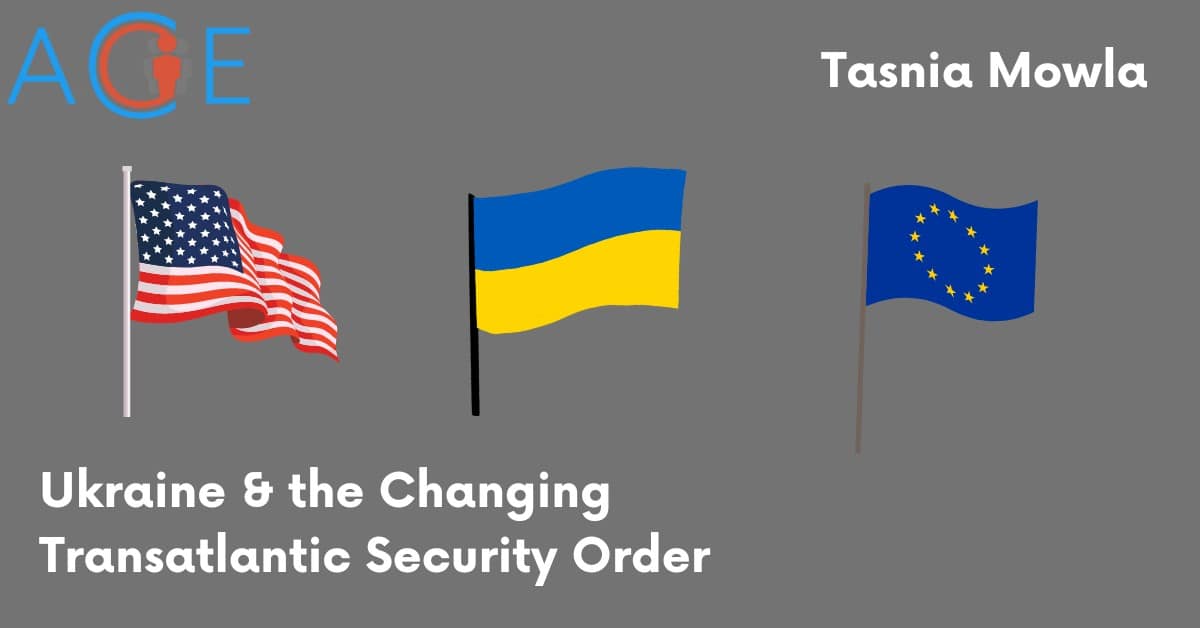West Sanctions Russia to Deter Aggression Against Ukraine
The United States and its allies imposed sanctions on Russia when the country annexed Crimea from Ukraine in 2014. The US believed annexation threatened to reverse post-Cold War borders in Europe and endangered security, the rule of law, and human rights in Europe and beyond. However, the sanctions were limited in scope, and President Vladimir Putin ordered a full-scale invasion of Ukraine eight years later on February 24, 2022. This time a much stronger package of financial, trade and travel sanctions was imposed to curtail Russia’s ability to wage war and deny it access to finance and technology to upgrade its military capabilities. The sanctions froze much of Russia’s foreign reserves held abroad and targeted oligarchs, financial institutions, export-oriented companies, and state actors. The energy sector was not sanctioned. According to the International Energy Agency (IEA), oil and natural gas exports made up 45% of Russia’s federal budget.
Dependence and Disunity: the Challenge in Implementing Sanctions
Infographic on US and EU energy dependence on Russia
The United States is not a major consumer of Russian oil and gas, but decided not to implement energy sanctions because European allies depend on energy supplies from Russia. When asked whether the US was considering energy sanctions, Deputy National Security Advisor for International Economics Duleep Singh acknowledged at a White House press briefing, that “our measures were not designed to disrupt in any way the current flow of energy from Russia to the world.” At that time, rising domestic inflation and spiraling energy prices threatened the post-Covid economic recovery. The US Treasury prohibited financial transactions with Russian financial institutions, but included an exception for fossil fuel exports from Russia through “a general license to authorize certain energy-related transactions with the [Russian] Central Bank”.
European countries were divided on energy sanctions. The EU as a bloc is highly dependent on Russian energy and receives 25% of its oil imports and 45% of its gas imports from Russia. European nations have found it more difficult to achieve energy independence because supplies from Russia are integrated into their energy infrastructure. Many EU members receive energy via pipelines connected to Russia, which take years to build.
President Biden signed an Executive Order in March 2022, which broadened sanctions to the energy sector. He recognized that “we’re moving forward on this ban, understanding that many of our European Allies and partners may not be in a position to join us.” The US measures took immediate effect, prohibiting the import of Russian crude oil, petroleum and petroleum products, liquified natural gas and coal as well as any new US investment in the Russian energy sector.
On March 2, the European Commission applied sanctions against Russian financial institutions, but omitted two of the largest banks—SBERbank and Alpha Bank. The decision was likely taken to allow energy import payments. The US, on the other hand, sanctioned both banks and their subsidiaries. On June 3, the Council of the European Union adopted its 6th package of sanctions which targeted Russian oil and additional Russian banks, including SBERbank. EU members agreed in the 6th package to prohibit “the purchase, import or transfer of crude oil and certain petroleum products from Russia to the EU.” However, the sanctions will not be applied immediately, they will be implemented gradually; within six months for crude oil and eight months for other refined petroleum products.
Hungary, the Czech Republic, and Slovakia raised concerns over the proposed energy embargo and urged the EU to extend the timeline or to allow other flexibilities. These countries negotiated an exception for the continued use of the Druzhba pipeline. Germany and Poland agreed to stop using oil from the Northern branch of the same pipeline. The EU noted that “as the majority of the Russian oil delivered to the EU is seaborne, these restrictions will cover nearly 90% of Russian oil imports to Europe by the end of the year.” So far, Russian gas has not been sanctioned.
Impact of Sanctions
The sanctions imposed after the invasion impacted the Russian economy immediately. The rouble plunged as overseas assets held by the Russian Central Bank were frozen. Key machinery and technology needed to maintain industrial production could not be imported. More than 1,000 foreign companies left the country, creating a vacuum of goods and services. Inflation grew, and prices for scarce items kept rising. The long-term forecast for the Russian economy was dire. However, the economy did not collapse, the rubble recovered after its initial dip, boosted by earnings from energy exports, because the majority of payments were done in rubles. Restrictions on Russian energy also impacted the economies of sanctioning countries. Reuters reported from Moscow on July 18 that President Putin claimed that “it was impossible to cut Russia off from the rest of the world, and that sanctions imposed by Western countries would not turn the clock back on Russia’s development.”
Russia withstood sanctions because the energy sector, its biggest source of export revenue, was able to operate freely for months following the invasion. Oleg Ustenko, the Chief Economic Adviser of the President of Ukraine, in an article in the Financial Times, criticized the energy sanctions since Russia still “can sell oil, gas and coal directly to every country except the US.” He added that “the measures the West has taken so far cover less than 5% of Russia’s pre-war crude oil exports.” In spite of this criticism, the energy sanctions have stopped new foreign investments in Russia’s energy sector, disrupted the flow of critical technology from the West that supports the fossil fuel industry, and caused a slow but gradual drop in Russian energy export volume. However, higher energy prices mean Russia can earn more from its energy exports than before the invasion.
Increasing the Effectiveness of Sanctions
Several strategies have been proposed and/or implemented.
- The sixth EU package of sanctions prohibited EU operators from insuring and financing the transport of oil to third countries. This came into effect at the end of 2022. The United Kingdom and Norway joined the EU sanctions. The maritime insurance industry is concentrated in these two countries and Luxembourg—an EU member. If oil tankers are uninsured, Russia will be unable to ship oil by sea to major third party customers such as China, India and Turkey.
- The US Treasury Department is considering implementing a price cap on Russian oil to ensure that revenue from energy exports goes down while global supplies remain stable. This has not gained traction among the G7 and EU countries.
- It would be possible to implement secondary sanctions on countries which purchase Russian energy. However, this strategy has also failed to gain traction.
Despite their limitations, the current sanctions will have long-term impacts on the Russian economy. The West is counting on the sanctions to gradually bring Russia to the negotiating table, while the Russian government is counting on waning public support in the West.


